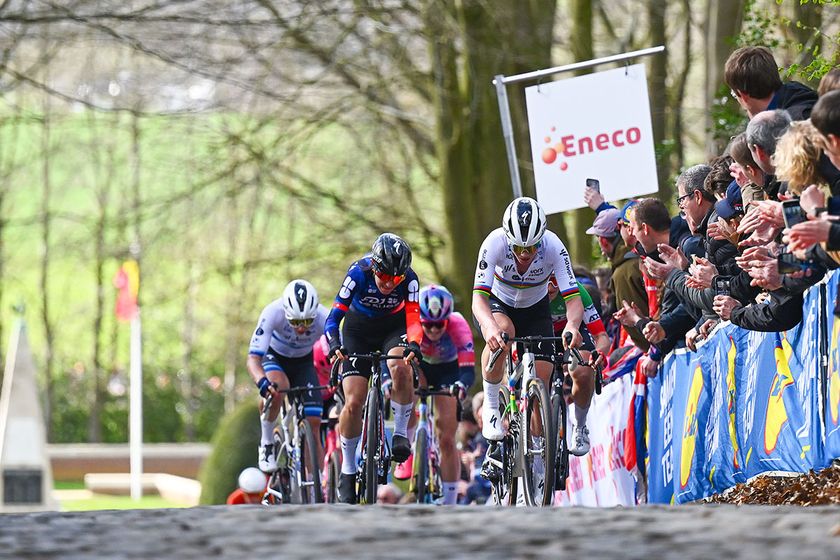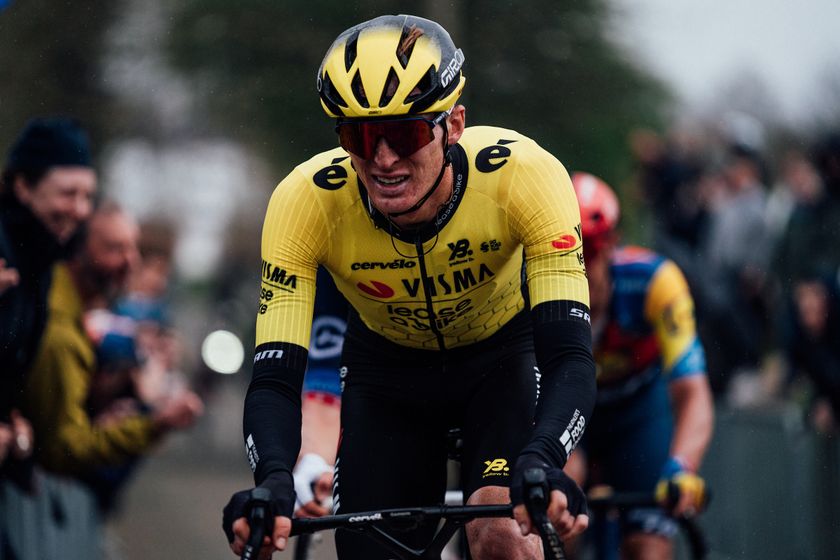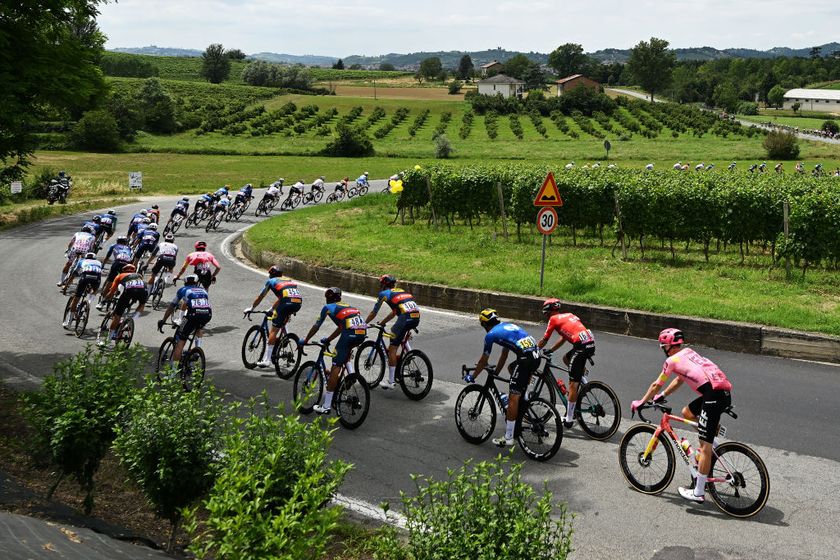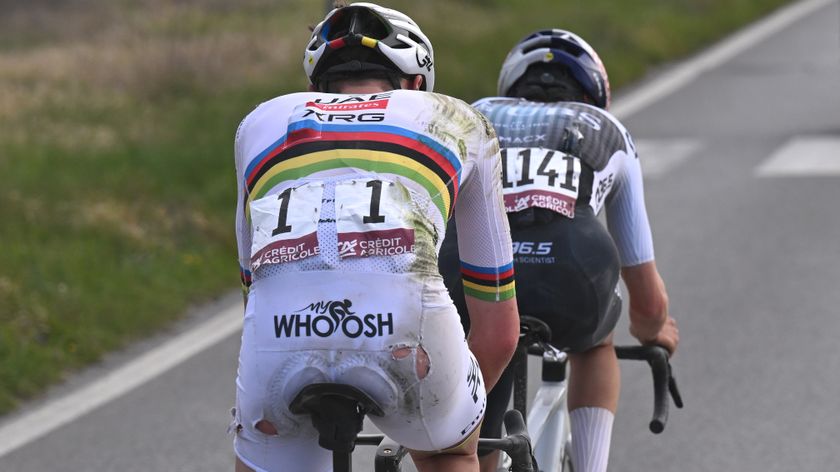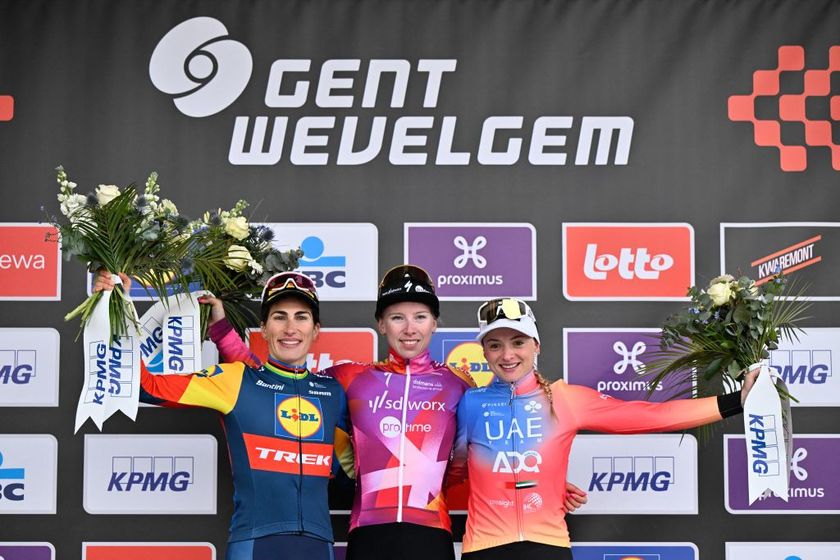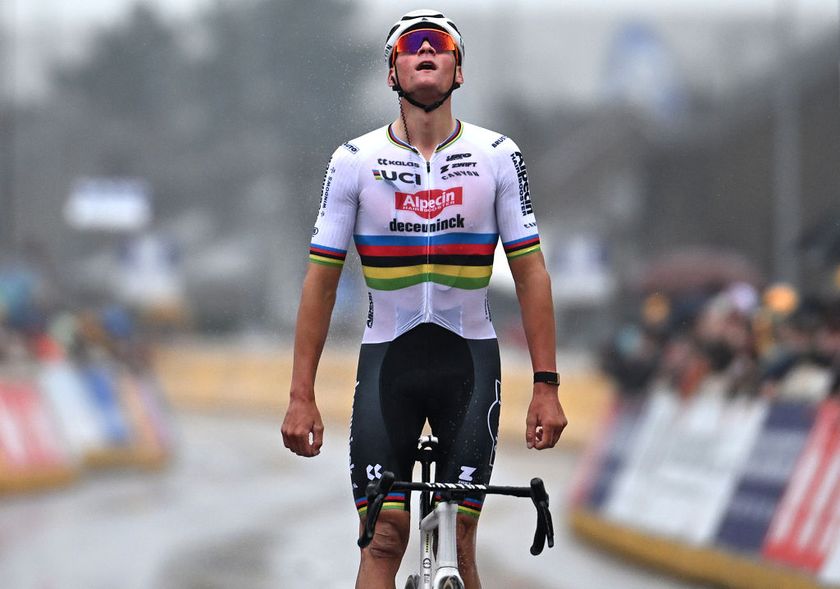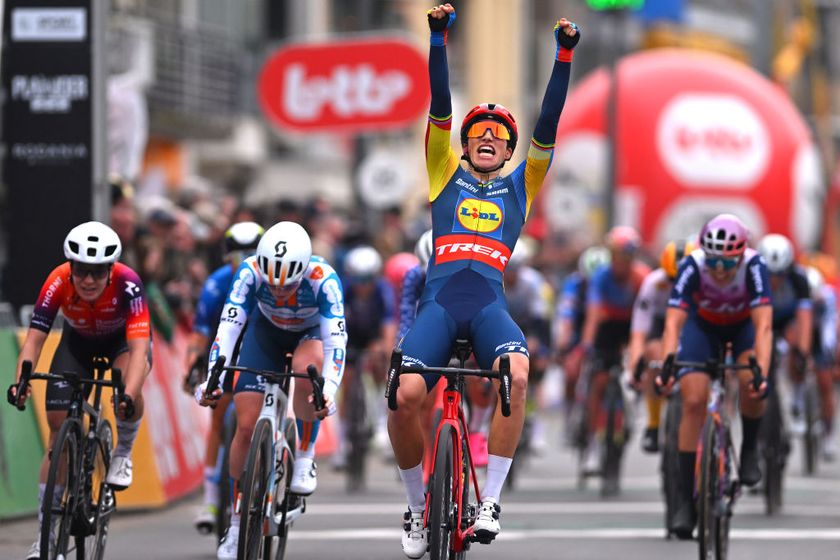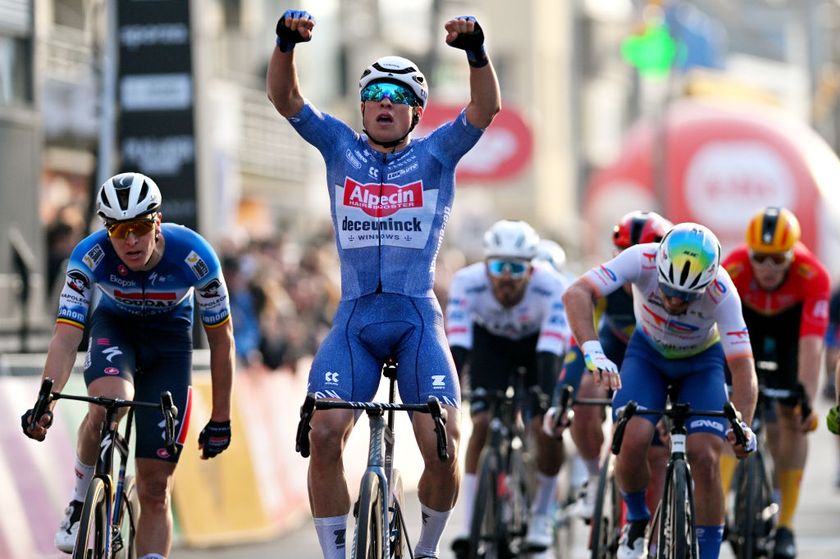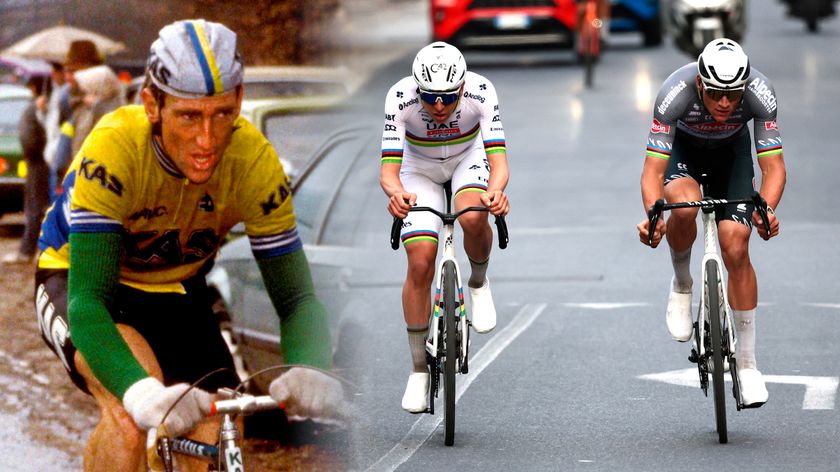Fitness questions and answers for November 7, 2006
Got a question about fitness, training, recovery from injury or a related subject? Drop us a line at...
Form & Fitness Q & A
Got a question about fitness, training, recovery from injury or a related subject? Drop us a line at fitness@cyclingnews.com. Please include as much information about yourself as possible, including your age, sex, and type of racing or riding. Due to the volume of questions we receive, we regret that we are unable to answer them all.
Carrie Cheadle, MA (www.carriecheadle.com) is a Sports Psychology consultant who has dedicated her career to helping athletes of all ages and abilities perform to their potential. Carrie specialises in working with cyclists, in disciplines ranging from track racing to mountain biking. She holds a bachelors degree in Psychology from Sonoma State University as well as a masters degree in Sport Psychology from John F. Kennedy University.
Dave Palese (www.davepalese.com) is a USA Cycling licensed coach and masters' class road racer with 16 years' race experience. He coaches racers and riders of all abilities from his home in southern Maine, USA, where he lives with his wife Sheryl, daughter Molly, and two cats, Miranda and Mu-Mu.
Kelby Bethards, MD received a Bachelor of Science in Electrical Engineering from Iowa State University (1994) before obtaining an M.D. from the University of Iowa College of Medicine in 2000. Has been a racing cyclist 'on and off' for 20 years, and when time allows, he races Cat 3 and 35+. He is a team physician for two local Ft Collins, CO, teams, and currently works Family Practice in multiple settings: rural, urgent care, inpatient and the like.
Fiona Lockhart (www.trainright.com) is a USA Cycling Expert Coach, and holds certifications from USA Weightlifting (Sports Performance Coach), the National Strength and Conditioning Association (Certified Strength and Conditioning Coach), and the National Academy for Sports Nutrition (Primary Sports Nutritionist). She is the Sports Science Editor for Carmichael Training Systems, and has been working in the strength and conditioning and endurance sports fields for over 10 years; she's also a competitive mountain biker.
Eddie Monnier (www.velo-fit.com) is a USA Cycling certified Elite Coach and a Category II racer. He holds undergraduate degrees in anthropology (with departmental honors) and philosophy from Emory University and an MBA from The Wharton School of Business.
Eddie is a proponent of training with power. He coaches cyclists (track, road and mountain bike) of all abilities and with wide ranging goals (with and without power meters). He uses internet tools to coach riders from any geography.
Get The Leadout Newsletter
The latest race content, interviews, features, reviews and expert buying guides, direct to your inbox!
David Fleckenstein, MPT (www.physiopt.com) is a physical therapist practicing in Boise, ID. His clients have included World and U.S. champions, Olympic athletes and numerous professional athletes. He received his B.S. in Biology/Genetics from Penn State and his Master's degree in Physical Therapy from Emory University. He specializes in manual medicine treatment and specific retraining of spine and joint stabilization musculature. He is a former Cat I road racer and Expert mountain biker.
Since 1986 Steve Hogg (www.cyclefitcentre.com) has owned and operated Pedal Pushers, a cycle shop specialising in rider positioning and custom bicycles. In that time he has positioned riders from all cycling disciplines and of all levels of ability with every concievable cycling problem.They include World and National champions at one end of the performance spectrum to amputees and people with disabilities at the other end.
Current riders that Steve has positioned include Davitamon-Lotto's Nick Gates, Discovery's Hayden Roulston, National Road Series champion, Jessica Ridder and National and State Time Trial champion, Peter Milostic.
Pamela Hinton has a bachelor's degree in Molecular Biology and a doctoral degree in Nutritional Sciences, both from the University of Wisconsin-Madison. She did postdoctoral training at Cornell University and is now an assistant professor of Nutritional Sciences at the University of Missouri-Columbia where she studies the effects of iron deficiency on adaptations to endurance training and the consequences of exercise-associated changes in menstrual function on bone health.
Pam was an All-American in track while at the UW. She started cycling competitively in 2003 and is the defending Missouri State Road Champion. Pam writes a nutrition column for Giana Roberge's Team Speed Queen Newsletter.
Dario Fredrick (www.wholeathlete.com) is an exercise physiologist and head coach for Whole Athlete™. He is a former category 1 & semi-pro MTB racer. Dario holds a masters degree in exercise science and a bachelors in sport psychology.
Scott Saifer (www.wenzelcoaching.com) has a Masters Degree in exercise physiology and sports psychology and has personally coached over 300 athletes of all levels in his 10 years of coaching with Wenzel Coaching.
Kendra Wenzel (www.wenzelcoaching.com) is a head coach with Wenzel Coaching with 17 years of racing and coaching experience and is coauthor of the book Bike Racing 101.
Steve Owens (www.coloradopremiertraining.com) is a USA Cycling certified coach, exercise physiologist and owner of Colorado Premier Training. Steve has worked with both the United States Olympic Committee and Guatemalan Olympic Committee as an Exercise Physiologist. He holds a B.S. in Exercise & Sports Science and currently works with multiple national champions, professionals and World Cup level cyclists.
Through his highly customized online training format, Steve and his handpicked team of coaches at Colorado Premier Training work with cyclists and multisport athletes around the world.
Brett Aitken (www.cycle2max.com) is a Sydney Olympic gold medalist. Born in Adelaide, Australia in 1971, Brett got into cycling through the cult sport of cycle speedway before crossing over into road and track racing. Since winning Olympic gold in the Madison with Scott McGrory, Brett has been working on his coaching business and his www.cycle2max.com website.
Richard Stern (www.cyclecoach.com) is Head Coach of Richard Stern Training, a Level 3 Coach with the Association of British Cycling Coaches, a Sports Scientist, and a writer. He has been professionally coaching cyclists and triathletes since 1998 at all levels from professional to recreational. He is a leading expert in coaching with power output and all power meters. Richard has been a competitive cyclist for 20 years
Andy Bloomer (www.cyclecoach.com) is an Associate Coach and sport scientist with Richard Stern Training. He is a member of the Association of British Cycling Coaches (ABCC) and a member of the British Association of Sport and Exercise Sciences (BASES). In his role as Exercise Physiologist at Staffordshire University Sports Performance Centre, he has conducted physiological testing and offered training and coaching advice to athletes from all sports for the past 4 years. Andy has been a competitive cyclist for many years.
Michael Smartt (www.cyclecoach.com) is an Associate Coach with Richard Stern Training. He holds a Masters degree in exercise physiology and is USA Cycling Expert Coach. Michael has been a competitive cyclist for over 10 years and has experience coaching road and off-road cyclists, triathletes and Paralympians.
Kim Morrow (www.elitefitcoach.com) has competed as a Professional Cyclist and Triathlete, is a certified USA Cycling Elite Coach, a 4-time U.S. Masters National Road Race Champion, and a Fitness Professional.
Her coaching group, eliteFITcoach, is based out of the Southeastern United States, although they coach athletes across North America. Kim also owns MyEnduranceCoach.com, a resource for cyclists, multisport athletes & endurance coaches around the globe, specializing in helping cycling and multisport athletes find a coach.
Shoe/Pedal combination
Q-factor
Cleat positioning
Crank length
Time trialling leg numbness
The balance test
Knee pain
Cramps after time off
Fainting while riding
Road rash
Hyperthyroid
Shoe/Pedal combination
I ride Sidi Genius 5.5 HT Carbon shoes (size 42.5) and Speedplay Zero pedals. I am a Cat 1 experienced racer who is trying to dial in an efficient and comfortable pedaling position. For some reason I am unable to wear this comfortable shoe/pedal combination and have a powerful pedal stroke. I always feel like I am toeing with each pedal stroke. I've done everything from pushing the cleat as far back as possible to bringing out the dremmil tool and drilling some extra room (compromising the strength of the cleat). Riding shoes all come pre-drilled for popular cleat/pedal brands. I have switched pedals and shoes a few times, however I still run into the same problem. Sidi shoes and Speedplay Zeros are comfortable and I prefer to somehow stay with this combination.
Cameron Hoffman
Steve Hogg replies:
You have a common problem. It is very likely that you don't have your cleats back far enough particularly with your combination of shoe and pedal.
Q-factor
I always thought that for the best possible Q-factor and power production that your shoes should be as close to the crank as possible (without touching). However, while looking at many pictures of the pro peloton it always looks like there's a decent gap between their crank and shoe.
Ryan Bates
Steve Hogg replies:
There is no ideal in other than an individual sense. I have found many times that riders who are tight generally in and around the hips, and who tend to pedal with knees out some distance from the top tube, are better served with feet further out from the crank arm than what you describe.
Cleat positioning
I recently tried positioning my cleats farther back (from the ball of the foot to a little behind the ball). I did not make any adjustments left or right on the cleat, I just slid it back a few mm's. I did not make any adjustments to the saddle height or fore/aft position after the cleat relocation. I noticed a more "stable" feel from my feet, which felt good. After a longer distance I noticed a little 'tinge' from my upper right Achilles area that I hadn't felt before. Not really painful, but a twinge that seemed to tell me something was a little off.
Several hours after the ride the area just below the left knee on the inside and a little to the back of the leg began to hurt. It was tender to the touch and I noticed it when I walked. I iced it a bit and went for a ride the next day, and noticed that it didn't hurt (much), when I rode. Where I did notice it was when I was starting from a stop on out of the saddle efforts.
So, do you think the soreness is from not adjusting the fore/aft position of the saddle or is it just getting used to a new position? Also, I have the Keo pedal with the red cleats (float) and tend to have them positioned neutrally (toes not in or out). Also, I typically ride with a heel down position (not on my toes excessively).
Chris Pritchard
Steve Hogg replies:
With one exception, everything you have said with regard to twinges and discomfort suggests that your seat is a touch too high, so it would be a good idea to lower it a few mm.
Crank length
I have seen a few options on choosing crank length, but I want a better one. I am 6'5" with a 39.75" inseam, and have a size 14.5 US foot. I run 180 cranks, and feel great on them. My riding style is relatively high cadence like 95 to 99 rpm for long rides, and above for criteriums. I have a few friends who tell me to drop to 175 or 177.5 cranks for better performance. They all site the rumors of Lance Armstrong running 165s stamped with 170. However I'm stuck in the thought of 180s being anatomically correct for me. My question to you is how can I use a Computrainer (I think that would give the best data with power and pedal scan) along with switching between 180s and 175s to see where the advantage lies for me?
Rocky Amon
Charlotte, NC, USA
Scott Saifer replies:
The benefit of shorter cranks is generally smoother spin and higher cadences. If you can spin 95+ in all your races, I doubt your cranks are too long. If you consider your leg length and foot size compared to most riders, even Lance Armstrong, you'll find that proportionally you are already on short cranks.
Time trialling leg numbness
I am finding in events where I use my time trial bike that I experience pins and needles in my left leg (my weaker side). It starts in my toes then my foot but eventually continues up my leg. I don't have this on either my winter training bike or my road bike. Neither does it occur on my right leg. I have tried various positions to alleviate the issue (higher bars, shorter reach, change of saddle height, tilt and even a narrower saddle) but the problem continues to persist.
I wouldn't say I'm particularly flexible and tend to get stiff muscles in my outer left calf and on my lower back on the right hand side.
Kevin James
Steve Hogg replies:
The likely cause is that something about your TT position is challenging you in some way. My best guess based on what you have told me is that a lower torso position (if it is lower) on your TT bike or the further forward seat position or some other positional difference or a combination of several factors to do with your TT position, are causing you to be less stable on the seat.
The balance test
I have read most of your bike fit articles over the past year or so and have implemented most of the suggestions with outstanding improvements in fit and comfort after several years of riding with the saddle too high, cleats too far forward and increasing pain as I age (60). Every one of the suggestions has improved comfort after trial and error as suggested, and usually in the direction where you identify the largest percentage of relief from something amiss.
One problem remains: I have an arthritic condition in my lower back that makes the 'balance test' problematic - I can't stay bent over the bike with no hands long enough to determine whether it's stable without having to grab back on before I lose control or suffer substantial back pain. While I can ride with no lower back pain with hands on the bars (something I couldn't do with the saddle forward and the back effectively arched), I just can't carry all the weight with the torso alone. I still get some shoulder pain and hand numbness on long rides and I can't figure out if this is inevitable or just an old habit I can't break, or something that could be helped with further positioning. I have often found myself tensing my shoulders towards my ears with no particular stimulus, and I can relax comfortably without pain if I keep myself conscious of this, but the event creeps back when I concentrate on other issues while riding.
Larry Klose
Steve Hogg replies:
The balance test is an imperfect explanation of the way that I go about determining seat set back. It is imperfect in that a rider needs a reasonable degree of function to pass it as well as having their seat position correct.
Knee pain
I have been getting pain along the outside of my knee cap and also in the muscle just above and below the knee cap to the outside. All my pain is on the outside of my left leg, never medial, posterior or anterior. I only have pain in my left knee. My normal foot position is for my feet to face outwards, duck footed and I have adjusted my cleats to accommodate that position. I have just switched to Speedplays and I have narrowed my stance, but I am still feeling pain.
My seat height give me about 30 degrees of knee bend. I have my cleats placed towards the heal of my shoe so that I do not have Achilles pain, so the ball of my foot sits a little in front of my pedal axis. A plum dropped from the bone just below my knee would drop right at my pedal axis.
I have been told that I have a tight IT band, but I stretch and roll it everyday and I still have the pain. Any suggestions on bike set up to help ease the pain? I was told that I should possibly narrow my stance even more
Mike Brooks
Steve Hogg replies:
It certainly sounds like what you are experiencing is the result of a tight IT band on the left. As to likely causes, here are some boxes to tick:
Cramps after time off
I was happy to finally see these questions from Viktor Recina and Robin Valdes, and thought I would share my experience with this problem. I have had symptoms identical to those described by Viktor and Robin, and though I've done much searching and had seen a few doctors, I had not yet heard of anyone with similar problems and no one could give me a diagnosis. However, the diagnosis of a muscular myopathy surprises me since I have found that my condition has gotten better over time.
I am a 25 year old cat 1 racer. I first had these symptoms 5 years ago as a cat 4 after taking 3 days off after a summer of consistent training. This first time was the worst - I couldn't walk or even stand up without extreme pain. It took 3 weeks for the symptoms to go away enough to ride again. Since then, I've had the same symptoms once or twice a year in similar circumstances, sometimes after just 1 day off the bike. Since I could find no explanation, my solution was to try to avoid taking a day off riding as much as possible. However, I have noticed that the severity of pain, and time required off the bike has decreased with each episode. Though it still happens sometimes, I don't need to be as careful as I used to be, and I am usually back to normal in a few days.
I suppose I don't have a good understanding of what a muscular myopathy entails, but I assumed it is a degeneracy: getting worse over time. My condition seems to have improved. Further, I've been consistently faster every year, and am now competitive in NRC races. Would this be possible with a muscular myopathy?
Kyle Barbary
California, USA
Scott Saifer replies:
Saying that one has a myopathy', is a fancy way of saying that one has a disease of the muscle. I'm not an expert on skeletal muscle myopathies, but have studied cardiomyopathies (heart muscle problems) a bit.
Fainting while riding
A week ago I was riding to work like every morning when I fainted and fell to the ground cold (never fight an inanimate object). I broke the left collar bone, hit the side of my head hard and also ruptured my ear drum.
I'll live. But I am curious why I fainted. I am an active adult (42 years old riding 6000km a year) and was going at pedestrian pace when it happened so effort was not an issue. What should I look for during a check up? Low electrolytes? Heart problems? Low blood pressure?
Juan Blazquez
Washington DC, USA
Scott Saifer replies:
There are plenty of reasons why a rider might faint. Some of them are totally benign and can be fixed by changing the diet or hydration behaviors. Others are more serious medical conditions. The possibilities will be distinguished by tests that a coach can't do over the internet and can't order for you.
Road rash
A friend of mine came off his bike this morning. He hit some grease on the roads of Jakarta and went for a skid along the road. Needless to say he has lost a bit of skin on his arms and legs and butt. He mentioned to me that he wants the wounds to dry out but I seem to recall reading that you should keep them moist so that the scabs don't break apart when you move your arms and legs.
Sean Dent
Jakarta, Indonesia
Scott Saifer replies:
Letting a road rash air will make it dry out and stop bleeding sooner, the first time, but you are correct that keeping the area clean, protected and moist will give you faster healing, less scarring and less re-opening of the wound.
Hyperthyroid
I have just been diagnosed with hyperthyroidism, and am a keen mountain biker. I found your previous article and liked the analogy of someone with hyperthyroidism being like a car engine with the tick-over at 2500rpm.
My question is what is my engine speed when I am cycling? My heart rate is now about 60 when relaxed (previous low was 42 bpm). Is my heart beating faster by ~20bpm regardless of my activity level, impairing my performance when cycling? It is normally between 140-160 when I am working hard, and I do not feel the effects of the hyperthyroidism when I am cycling, but am I endangering myself by continuing to cycle?
Chris Porter
Bristol, UK
Kelby Bethards replies:
If your thyroid function is too high, then treatment is something you need to pursue. Overactive thyroid can be hard on the heart (cause irregular rhythms) and actually cause some muscle weakness.
